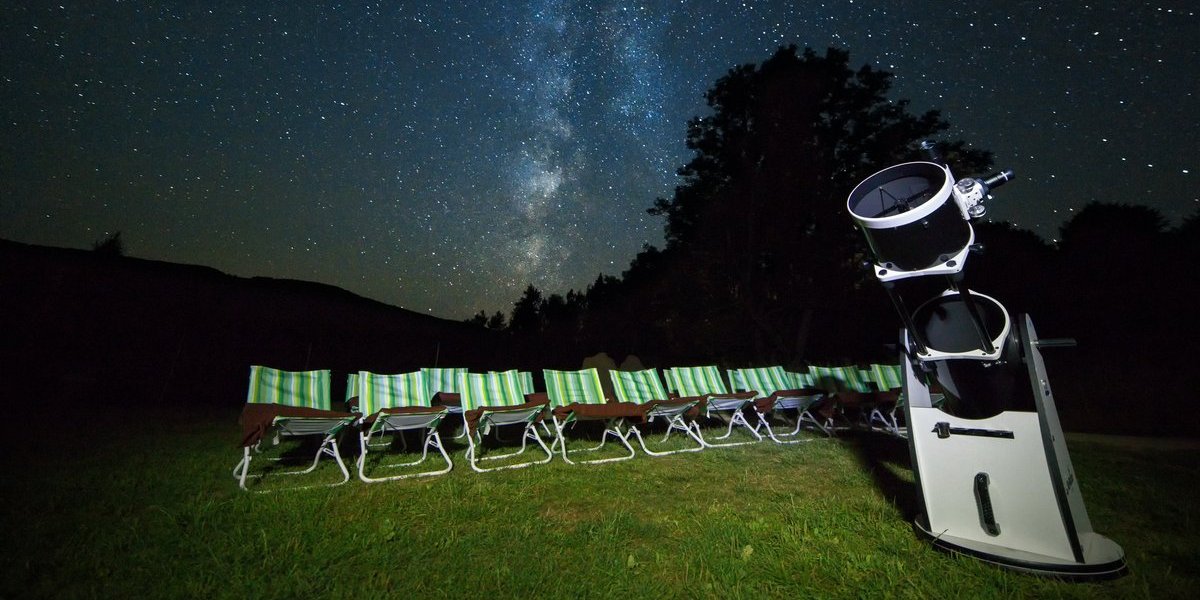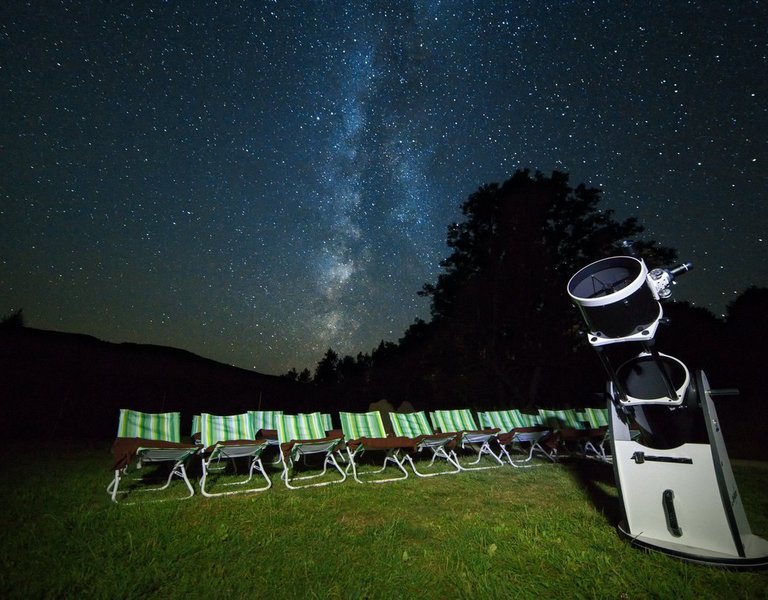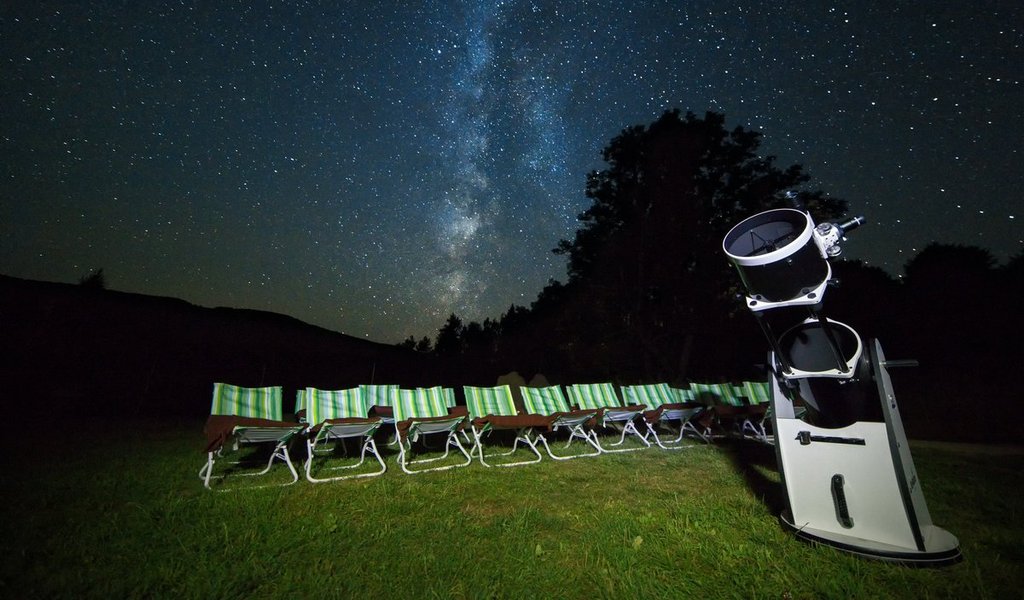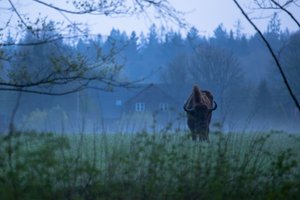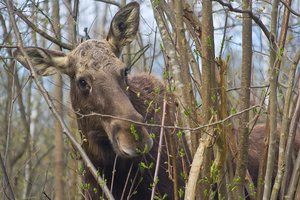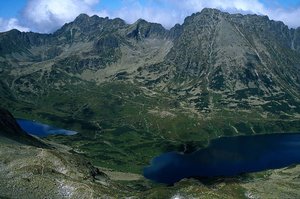Bieszczady under the stars
The Bieszczady Mountains are one of the few places in Poland and Europe offering views of the starry sky undisturbed by artificial light.
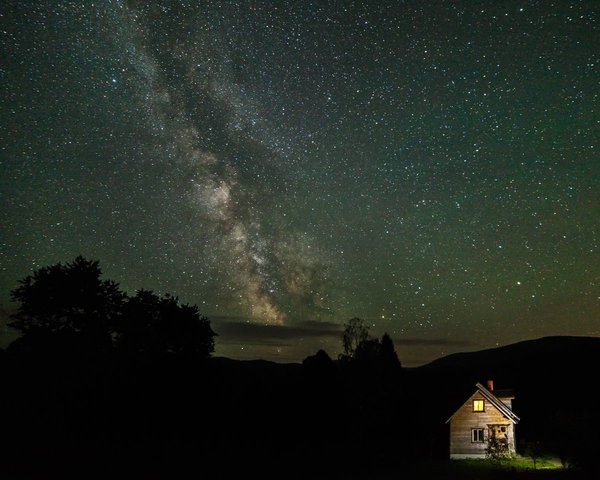 “The sky over the Bieszczady is absolutely one of its kind,” says Alicja Wosik, the head of the Podkarpackie Regional Tourism Board.” “There are no big cities here, so it gets really dark at night.You can get an undistorted view of the sky. Nowhere else in Poland will you find a more beautiful sky than in the Bieszczady,” she says.
“The sky over the Bieszczady is absolutely one of its kind,” says Alicja Wosik, the head of the Podkarpackie Regional Tourism Board.” “There are no big cities here, so it gets really dark at night.You can get an undistorted view of the sky. Nowhere else in Poland will you find a more beautiful sky than in the Bieszczady,” she says.
Pavol Ďuriš, an astronomy enthusiast from Slovakia who once came to the Bieszczady looking for clear night skies and stayed for good, agrees. Ďuriš has been a long-time member of the Slovak Astronomical Society, where he is head of the section "Light Pollution". Since the invention of the light bulb 140 years ago, light smog has been swelling up and encroaching on increasingly larger swathes of the globe. It is commonplace in urban areas.
In 2016 new world atlas of light pollution has been published. It shows that one-third of humanity cannot view the Milky Way — this includes 80% of Americans and 60% of Europeans. Although there are a few patches of pristine dark sky still left in Europe, more than 99% of the European populations live under the bright glow of light pollution. Pristine night skies are a precious merchandise now.
“Few people are aware that excessive artificial light is harmful to people and the environment. The human body can rest fully only in the dark - without the dark, melatonin, the so-called sleep hormone, will not secrete. The same applies to animals, which have got accustomed to dark nights through evolution, and whose natural cycles, including reproduction, are disrupted by artificial light. Many animals lead nocturnal lives and too much artificial light alters their natural habitat. Wasting energy is another problem. For example, street lamps are usually badly designed – instead of shining downwards, they unnecessarily cast light upwards and sideways,” says Ďuriš.
The dark sky is our natural wealth, heritage, which we should protect the same way as we do the environment, Ďuriš says. In 2013, his initiative led to the establishment of the Bieszczady Starry Sky Park (Poland’s second, after the Izera Dark-Sky Park, and Europe’s sixth) covering over 113 ha across the Bieszczady National Park, the San Valley Landscape Park, and Cisna-Wetlina Landscape Park. Together with the Połoniny Dark Sky Park in Slovakia (also conceptualised by Ďuriš) and Transcarpathian Dark-Sky Park in Ukraine (established in 2016) it makes up the East Carpathian Biosphere Reserve and Europe’s largest night sky reserve, with an area of over 208 ha. Its mission is to protect the nocturnal environment, including the dark sky, from light pollution, and to advance the sustainable development of the region and green tourism.
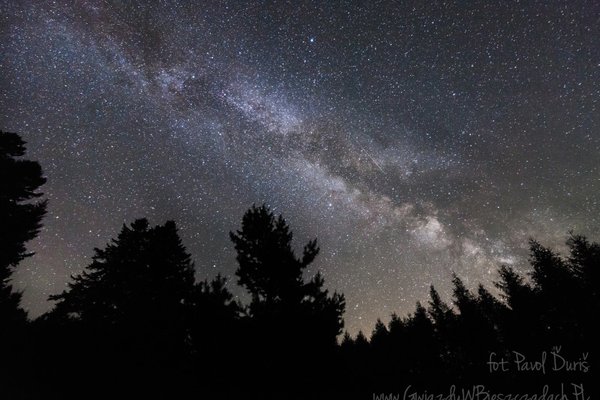 “Dark sky parks are the last places in the urbanised world where you can still see the stars,” says Ďuriš. That is why south-eastern Poland has become a magnet for astronomy lovers. The first astro-tourism farms are popping up to cater to their needs. On cloudless and moonless nights you can see more than 7,000 stars here with the naked eye (compared to a meagre 2,500 in sparsely lit rural areas). Municipality Lutowiska features viewing terraces equipped with info boards and sky maps — in Lutowiska, Stuposiany and Brzegi Gorne — for carrying out astronomical observations (using your own kit).
“Dark sky parks are the last places in the urbanised world where you can still see the stars,” says Ďuriš. That is why south-eastern Poland has become a magnet for astronomy lovers. The first astro-tourism farms are popping up to cater to their needs. On cloudless and moonless nights you can see more than 7,000 stars here with the naked eye (compared to a meagre 2,500 in sparsely lit rural areas). Municipality Lutowiska features viewing terraces equipped with info boards and sky maps — in Lutowiska, Stuposiany and Brzegi Gorne — for carrying out astronomical observations (using your own kit).
His astro-tourism farm Dolistowie in the village of Dwernik is where Ďuriš organises presentations and lectures on astronomy, sky telescope viewing, and workshops on night and nature photography. “Astro-tourism is a green niche form of tourism,” says Ďuriš. “My guests can rest in darkness and peer at the night sky: galaxies, nebulas, shooting stars and meteors, sometimes comets. At the turn of July and August the Perseids, or meteor showers, are visible. You can also discern the planets, Saturn’s rings, clouds in Jupiter’s atmosphere and its moons, and the phases of Venus. On moonlit nights it’s too bright to see many stars, but you can get a look at Moon craters instead. Zodiacal light, which can only be seen in areas unpolluted by light, is an amazing phenomenon. It’s a yellowish glow — sunlight scattered off the interplanetary dust — visible with the naked eye at twilight in the spring or at dusk in the autumn. The Bieszczady Mountains offer a spectacular view of that phenomena”.
An information centre of the Bieszczady Starry Sky Park has now opened in Stuposiany, featuring telescopes for night and day-time observations and a mini-observatory, near the Chata Socjologa Cabin on Otryt (idea proposed by Ďuriš), which features the biggest telescope in the Bieszczady.
Nelly Kamińska
02.04.2016
